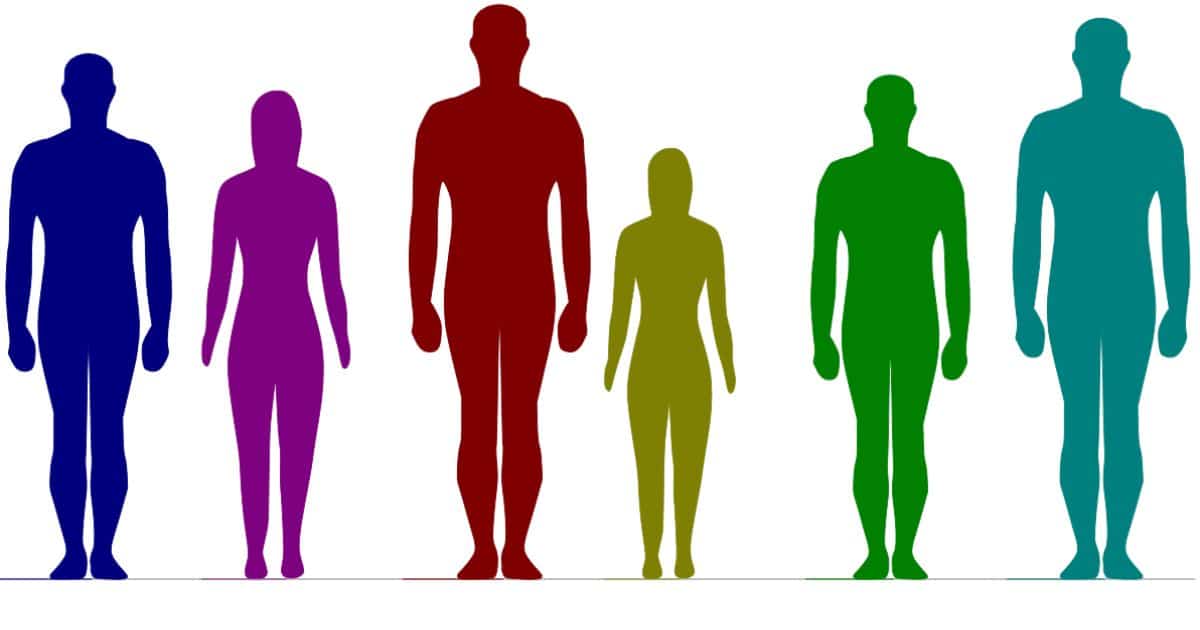Visualizing height differences can often be a challenge. Whether you’re trying to picture how tall a character from your favorite movie is, wondering if that sofa will fit perfectly in your living room, or simply curious about the ideal height difference between romantic partners, having a clear visual representation can make all the difference.
Introducing the ultimate online height comparison tool, designed to make it easy and intuitive to compare the heights of people, objects, characters, and more.
With this powerful tool, you can quickly and accurately visualize height differences, unlocking a wealth of practical applications and satisfying your curiosity like never before.
How Can We Add a Person or an Object to Compare Heights?
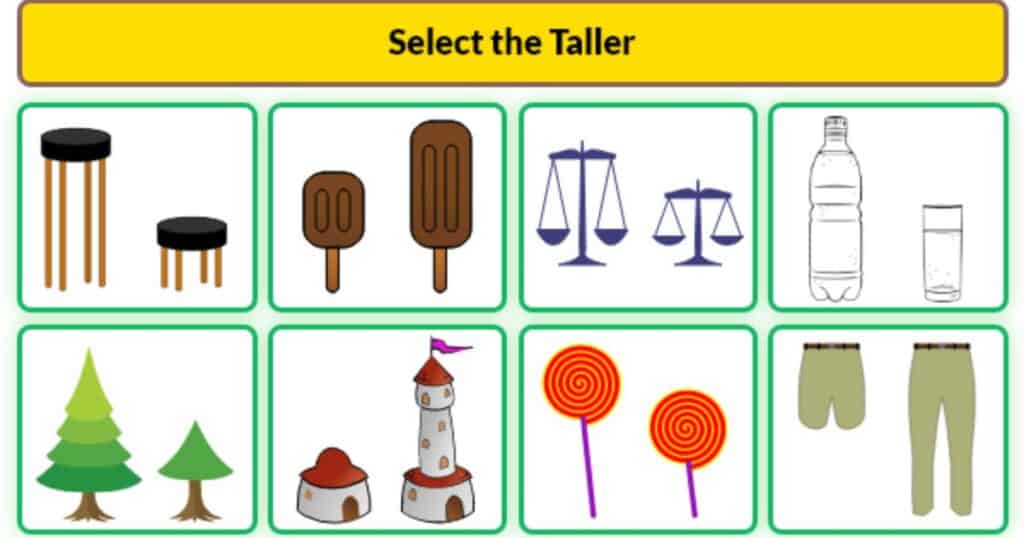
Adding entities to the height comparison tool is a breeze. Simply follow these steps:
- Open the height comparison tool in your web browser.
- Click on the “Add Person/Object” button.
- Enter the name or description of the entity you want to add.
- Specify the height using the intuitive input fields or dropdown menus.
- Choose the unit of measurement (feet/inches, centimeters, or meters).
- Click “Add” to confirm.
Repeat these steps for each additional person, object, or character you want to include in the comparison.
The tool will instantly display the added entities, allowing you to visualize their relative heights side by side.
How Can We Delete a Person or Object to Compare Heights?
Removing entities from the height comparison is just as straightforward as adding them. Follow these simple steps:
- Locate the entity you want to remove from the list or visual display.
- Look for the “Delete” or “Remove” button associated with that entity.
- Click on the button to confirm the removal.
The selected entity will be instantly removed from the comparison, and the remaining items will be adjusted accordingly.
Why Do We Need a Height Comparison Tool?
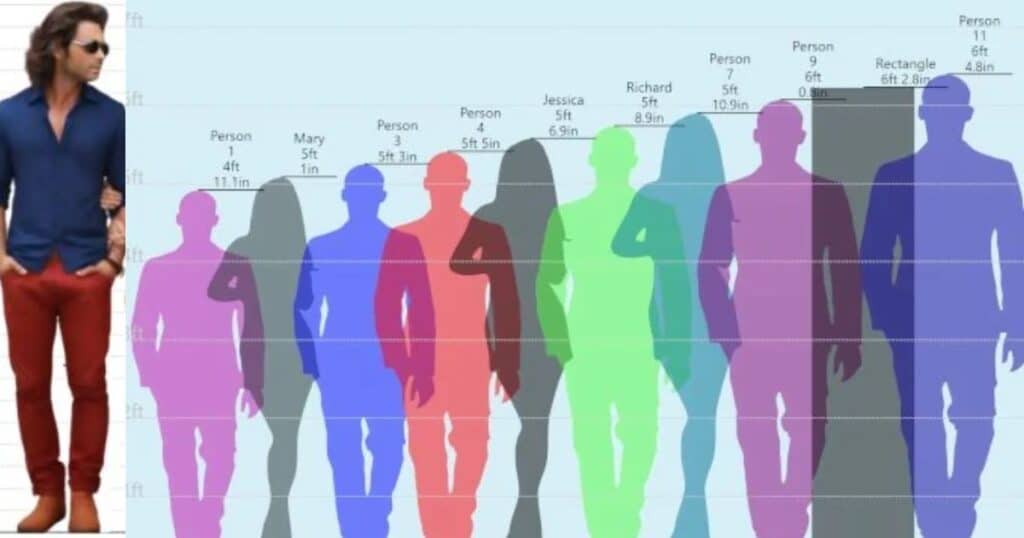
Height comparison has numerous practical applications in our daily lives. Here are a few common scenarios where a height comparison tool can prove invaluable:
- Furniture Shopping: When buying furniture like sofas, chairs, or tables, visualizing the dimensions can be challenging. A height comparison tool allows you to see if a particular piece will fit comfortably in your space.
- Buying Clothes: Choosing the right size clothing can be tricky, especially when shopping online. With a height comparison tool, you can accurately visualize how a garment might fit based on your height.
- Understanding Child Growth: As children grow, it’s essential to monitor their height percentiles to ensure healthy development. A height comparison tool can help parents and caregivers track a child’s growth over time.
- Design and Construction: Architects, interior designers, and builders often need to visualize the dimensions of various elements, from furniture to structural components. A height comparison tool can aid in this process.
- Sports and Fitness: In sports and fitness, understanding your height in relation to equipment or other athletes can be critical. A height comparison tool can provide valuable insights in these contexts.
Perfect Couple Height Difference
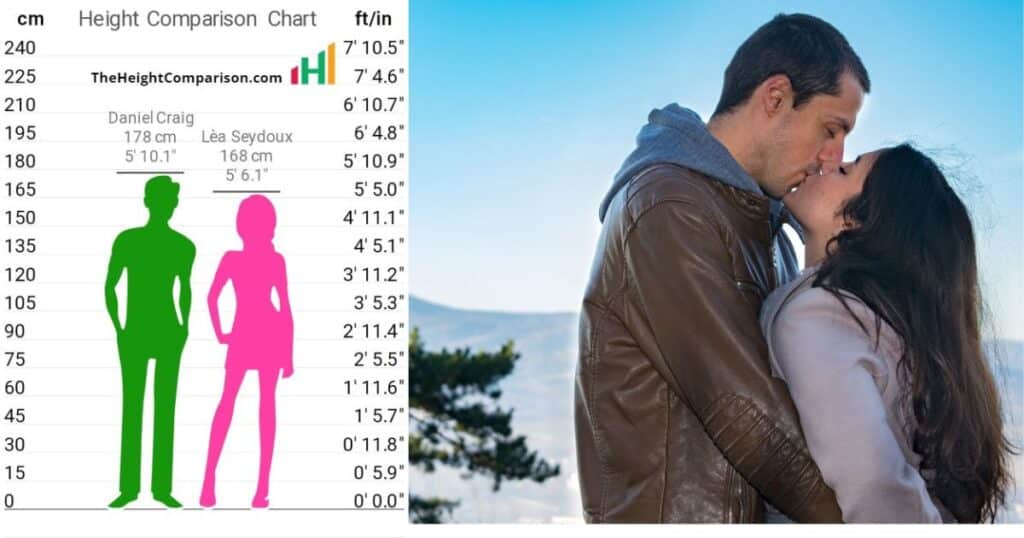
When it comes to romantic relationships, the height difference between partners is often a topic of interest and discussion.
While there is no definitive “ideal” height difference, research and surveys have shed some light on common preferences:
- Traditional Gender Norms: Historically, there has been a societal preference for the man to be taller than the woman in a heterosexual relationship. This traditional gender norm is still prevalent in many cultures.
- Average Height Difference: According to a survey conducted by a popular dating app, the average preferred height difference for heterosexual couples is around 8 inches, with the man being taller.
- Comfort and Compatibility: Many couples cite comfort and compatibility as important factors in their height difference. For example, a significant height difference can make certain activities, such as dancing or walking hand-in-hand, more challenging.
- Personal Preferences: Ultimately, height difference preferences can vary greatly based on individual preferences, cultural norms, and personal experiences.
The height comparison tool can help couples visualize their height difference and explore what feels comfortable and attractive to them.
Character Height Comparison
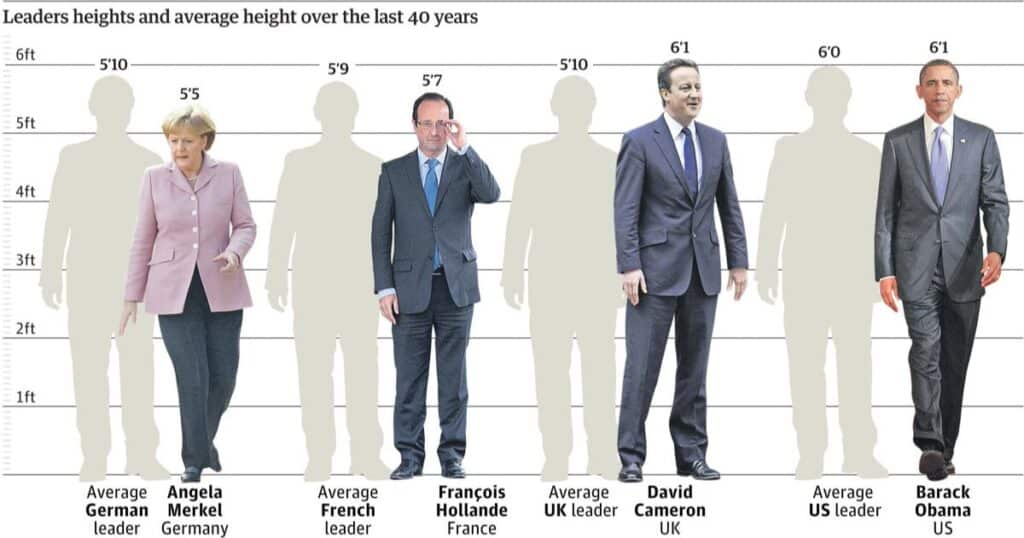
For fans of movies, TV shows, comics, and other fictional media, understanding the relative heights of characters can enhance their appreciation and immersion in the story.
The height comparison tool provides a unique opportunity to visualize the stature of beloved characters and compare them to each other or real-life entities:
- Superheroes: Compare the towering heights of iconic superheroes like Superman, Thor, and Captain America to see how they measure up against each other and real-life individuals.
- Fantasy Characters: Visualize the colossal size of giants, dragons, and other fantastical creatures from popular fantasy franchises like “Game of Thrones” or “The Lord of the Rings.”
- Anime and Manga: Explore the heights of beloved anime and manga characters, from the diminutive Chibi-style figures to the imposing giants found in various series.
- Cartoon and Video Game Characters: Compare the heights of beloved characters from cartoons, video games, and other multimedia platforms to understand their relative sizes.
This type of comparative analysis can deepen fans’ understanding and appreciation of the fictional worlds they love.
Height Comparison in Centimeters
The centimeter is a widely used unit of measurement for height, particularly in many European countries and in the scientific community.
The height comparison tool allows users to input and compare heights in centimeters with ease:
- Open the height comparison tool.
- Select the “Centimeters” option from the unit dropdown or input field.
- Enter the desired heights in centimeters for each entity you wish to compare.
- The tool will instantly display the visual comparison, making it easy to understand the relative heights in centimeters.
Centimeters are commonly used for height measurements in countries like the United Kingdom, France, Germany, and many others.
They are also the standard unit for measuring height in scientific research and medical contexts.
Height Comparison in Meters
Meters are another widely used unit for measuring and comparing heights, particularly in countries that have adopted the metric system.
The height comparison tool supports meters as a unit of measurement, making it simple to visualize height differences:
- Open the height comparison tool.
- Select the “Meters” option from the unit dropdown or input field.
- Enter the desired heights in meters for each entity you wish to compare.
- The tool will instantly display the visual comparison, allowing you to easily understand the relative heights in meters.
Meters are commonly used for height measurements in countries like Australia, Canada, India, and many others that have fully adopted the metric system.
They are also widely used in scientific and engineering contexts.
Height Comparison Chart in Feet
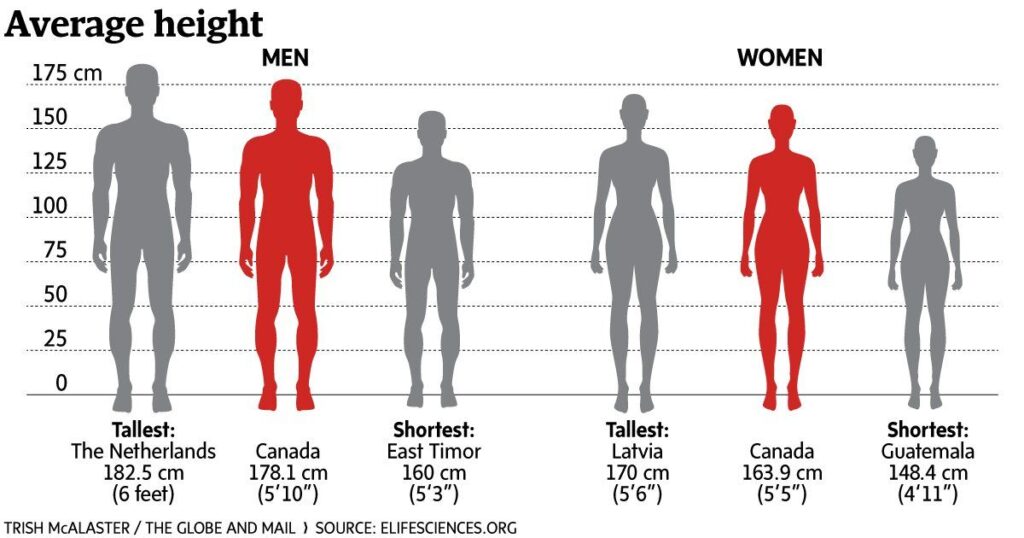
While meters and centimeters are widely used in many parts of the world, feet and inches remain the standard units for measuring height in countries like the United States and the United Kingdom.
The height comparison tool provides an intuitive interface for visualizing heights in feet and inches:
- Open the height comparison tool.
- Select the “Feet/Inches” option from the unit dropdown or input field.
- Enter the desired heights in feet and inches for each entity you wish to compare.
- The tool will instantly display the visual comparison, making it easy to understand the relative heights in feet and inches.
By supporting feet and inches as a unit of measurement, the height comparison tool caters to users who are more familiar with the imperial system, allowing them to input and compare heights using the units they are most accustomed to.
Height in Meters to Feet – Height Conversion
One of the many advantages of the height comparison tool is its ability to convert between different units of measurement seamlessly.
This feature is particularly useful when dealing with heights in different systems, such as meters and feet:
- Open the height comparison tool.
- Enter a height in either meters or feet/inches.
- The tool will automatically display the equivalent height in the other unit system.
For example, if you input a height of 1.8 meters, the tool will show the equivalent height in feet and inches (approximately 5 feet 11 inches). Conversely, if you input a height of 6 feet, the tool will show the equivalent height in meters (approximately 1.83 meters).
This height conversion capability streamlines the process of comparing heights across different unit systems, making the tool accessible and user-friendly for individuals from various backgrounds and regions.
How to Convert Height into Meters, Centimeters, Feet, and Inches on the Visualizer?
Converting between different units of height measurement is a breeze with the height comparison tool. Simply follow these steps:
- Open the height comparison tool.
- Enter a height in any unit (meters, centimeters, feet, or inches) using the appropriate input field or dropdown.
- **The tool will automatically display the equivalent heights
FAQs
Q: Can I compare heights of people with objects or characters?
Absolutely! The height comparison tool allows you to mix and match different types of entities, including real people, objects, animals, and fictional characters. This flexibility makes it easy to visualize relative sizes across various contexts.
Q: How accurate is the height comparison tool?
The tool strives for precise and accurate height comparisons. However, the accuracy ultimately depends on the data inputted by the user. If you enter correct heights for the entities being compared, the visualization will accurately reflect the relative sizes.
Q: Can I save or share my height comparisons?
A: At the moment, there is no built-in functionality to save or share your height comparison visualizations directly from the tool. However, you can always take a screenshot of the comparison and share that image with others if needed.
Q: How many entities can I compare at once?
The tool allows you to compare an unlimited number of entities simultaneously. You can keep adding people, objects, and characters to the visualization, providing a comprehensive overview of multiple heights side by side.
Q: Can I compare heights in different units within the same visualization?
No, the tool requires all entities to be compared using the same unit of measurement. You can’t mix meters, centimeters, feet, and inches within a single comparison.
Interesting Facts and Figures
- The tallest person in recorded history was Robert Pershing Wadlow, who stood at an incredible 8 feet 11 inches (2.72 meters) tall.
- The average height for men in the United States is 5 feet 9 inches (1.75 meters), while the average height for women is 5 feet 4 inches (1.63 meters).
- In the Netherlands, the average height for men is around 6 feet (1.83 meters), making it one of the tallest countries in the world.
- The height difference between the tallest and shortest living people in the world is over 5 feet (1.5 meters).
- The world’s tallest horse, Shaquille O’Neal, stood at an impressive 6 feet 6 inches (1.98 meters) at the withers.
Case Study: Using the Height Comparison Tool in Interior Design
Interior designers often face challenges when it comes to visualizing the scale and proportions of furniture and decor elements within a space. The height comparison tool can be a valuable asset in this context.
Imagine an interior designer working on a living room redesign for a client. They can use the height comparison tool to:
- Input the dimensions of the room and compare it to the heights of furniture they’re considering, ensuring proper scale and proportions.
- Add various pieces of furniture, such as sofas, chairs, and tables, to visualize how they will fit together and complement each other in terms of height.
- Compare the heights of decor elements like lamps, vases, and artwork to the furniture and room dimensions, creating a cohesive and balanced visual aesthetic.
By using the height comparison tool, interior designers can make more informed decisions, avoid costly mistakes, and create living spaces that feel harmonious and inviting.
Quotes from Satisfied Users
“I was always curious about how tall my favorite characters from Lord of the Rings were, and this tool finally gave me a clear visual. It’s amazing to see just how massive the Ents and Trolls really were compared to the hobbits!” – Sarah L., Tolkien enthusiast
“As a personal trainer, understanding my clients’ heights is crucial for tailoring workout routines and equipment choices. This height comparison tool has been a game-changer in helping me visualize and plan their training sessions more effectively.” – Mark T., personal trainer
“I was shopping for a new sofa online and struggling to picture how it would fit in my living room. This tool allowed me to input the sofa dimensions and compare them to the actual room measurements, giving me the confidence to make the right purchase.” – Jessica R., online shopper
These real-life examples showcase the diverse applications and benefits of the height comparison tool across various domains.
Conclusion
In a world where visualizing dimensions and proportions can be challenging, the height comparison tool stands as a valuable resource for individuals, professionals, and enthusiasts alike. By providing an intuitive interface for comparing heights, converting between units, and exploring real-world and fictional scenarios, this tool empowers users to make informed decisions, satisfy their curiosity, and gain a deeper understanding of the world around them.
Whether you’re an interior designer trying to create harmonious living spaces, a personal trainer seeking to optimize workout routines, or a movie buff eager to understand the stature of your favorite characters, the height comparison tool offers a comprehensive solution. With its user-friendly features, accurate visualizations, and versatile applications, this tool is poised to become an indispensable resource for anyone seeking to unlock the power of height comparisons.

Hello I am Gavin Hunt,
I has covered sports for over 20 years. I started writing for his college newspaper.
I reported on college sports. After graduating, became a sports reporter for a small local paper.
For ten years, I covered local high school and amateur games.
I profiled struggling athletes, inspiring readers. Later, I moved to the main city paper as lead columnist.
Now I travels nationally covering pro hometown teams.
My entertaining columns are widely read. With a big social media following, I has become the city’s top sports pundit.
